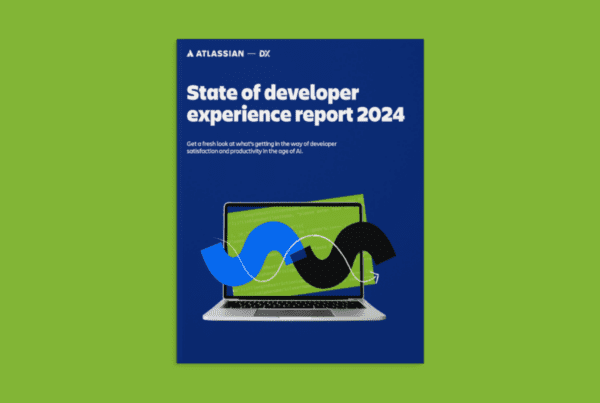The Developer Tools sector is poised for significant advancements in 2024, driven by innovative technologies and evolving user expectations. Whether you’re a software developer, tech founder or leader, it’s crucial to stay informed about the upcoming trends to attract top talent and meet the industry’s demands. Here are seven of our predicted trends in Developer Tools for 2024:
Developer Experience
DevEx will become a top priority in the Developer Tools sector. Forward-thinking businesses are anticipated to operationalize DevEx by creating dedicated DevEx teams. These teams, similar to customer experience teams, will analyze developers’ pathways to success through both quantitative and qualitative lenses. They will assess metrics like merge frequency, CI run times, and the occurrence of flaky tests. Additionally, these teams will collaborate with developers to identify workflow obstacles and success bottlenecks through surveys. Companies prioritizing DX teams are likely to attract top developer talent, as they demonstrate a commitment to enhancing the overall development experience.
AI Integration
Artificial Intelligence (AI) and machine learning are set to play a pivotal role in back-end development, automating tasks, analyzing large datasets, and enhancing the overall development process. AI code generation tools, like OpenAI’s Codex and ChatGPT, are now prevalent, automating tedious coding tasks and boosting efficiency. These tools are not just experimental but are becoming an integral part of software development, as indicated by the increasing number of software developers using AI chatbots and tools.
Internet of Behavior (IoB)
The Internet of Behavior is an emerging concept that focuses on the collection, analysis, and interpretation of data related to human behavior from various sources. It provides insights into how individuals behave and therefore can make predictions to enable targeted marketing, digital security and more. It is predicted to be one of the biggest trends of 2024, offering new opportunities for developers to create more personalized and user-centric solutions.
Headless CMS
Headless Content Management Systems (CMS) are gaining traction for their flexibility and scalability. By decoupling the front-end presentation layer from the back-end content management, headless CMSs allow for more customized web projects and easier integration with other systems. However, their implementation can be complex, necessitating comprehensive documentation and developer training to overcome the steep learning curve.
Serverless Architecture and Edge Computing
Serverless architecture is another trend set to grow in 2024. Function as a Service (FaaS) models, such as AWS Lambda and Azure Functions, are reducing the need for server management, thereby enhancing scalability and cost-efficiency. Alongside this, edge computing is emerging, decentralizing data processing to reduce latency and enhance real-time capabilities, crucial for applications like online gaming and IoT.
Low-Code and No-Code Development
The low-code/no-code market is on a remarkable growth trajectory, with projections suggesting it will reach $86.9 billion by 2027. By 2025, it is anticipated that these platforms will account for over 70% of software development activities. The popularity of low-code/no-code tools is driven by their ability to empower non-technical users to participate in app development, reducing the reliance on traditional coding expertise and accelerating digital transformation across various industries.
This trend will also of course impact and perhaps redefine the role of existing professional software developers, moving them towards more complicated and innovative tasks. The willingness to adapt is crucial here.
Cloud-Native Development
Cloud-native development, with Kubernetes at its core, is becoming increasingly influential. In 2024, Kubernetes is set to celebrate its tenth anniversary, with the cloud-native market expected to grow significantly, reaching USD 5575.67 million by 2028. The adoption of multi-cloud strategies is becoming essential, driven by the need to avoid cloud vendor lock-in and to capitalize on advancements made by different cloud vendors. This approach is enhancing business agility and adhering to evolving security and governance requirements.
As we move into 2024, these trends are poised to shape the Developer Tools industry, presenting both opportunities and challenges for tech recruiters and professionals in the industry. Staying informed and prepared for these advancements will be essential for driving innovation and maintaining a competitive edge. Remember, the tech industry is in a constant state of evolution, and being proactive in understanding and adapting to these trends will be key to success. Embracing these changes and leveraging the latest technologies will not only attract top talent but also ensure that your organization remains at the forefront of the Developer Tools sector.
So, as we look ahead to 2024, it’s clear that the world of Developer Tools is set for some exciting changes we look forward to seeing unfold.



